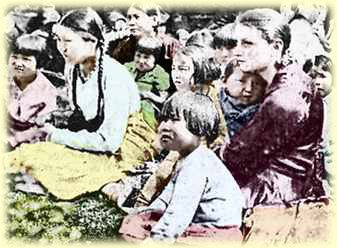 |
Family life, descent lines, marriage relations,
and inheritance of property are all principally regulated by the paternal
connection. The family is traditionally an extended one composed of parents,
married sons and their families, and unmarried sons and daughters. Several
families are grouped into nomadic kin villages. The kin villages are grouped
into lineages and clans, and these in turn were formerly grouped into clan
confederations. Traditionally the Kalmyk were divided into a princely estate,
which ruled the various confederations; a noble estate, which ruled the
lower social hierarchies, clans, and lineages; and a common estate. There
was also a clerical order forming an estate of its own. All but the common
estate have disappeared. |



